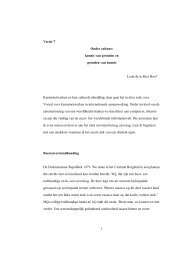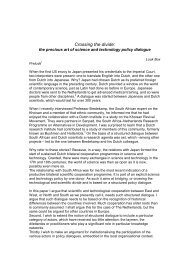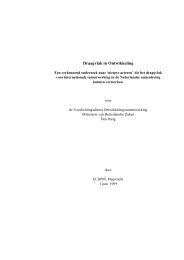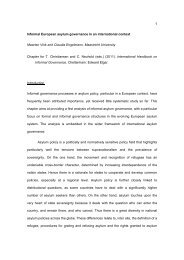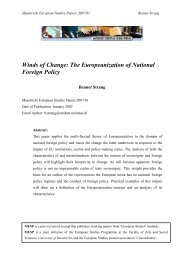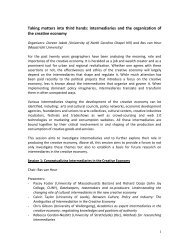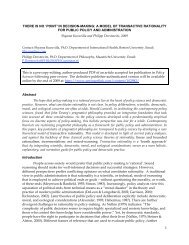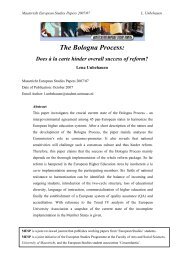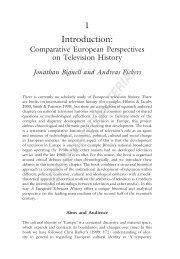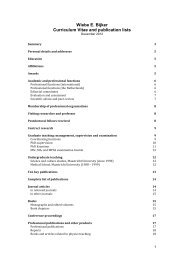the case of the synthetic dye industry, 1857–1914 - Maastricht ...
the case of the synthetic dye industry, 1857–1914 - Maastricht ...
the case of the synthetic dye industry, 1857–1914 - Maastricht ...
Create successful ePaper yourself
Turn your PDF publications into a flip-book with our unique Google optimized e-Paper software.
Comparing evolutionary dynamics across different national settings 181<br />
Fig. 1. Number <strong>of</strong> <strong>dye</strong> firms in <strong>the</strong> world, <strong>1857–1914</strong><br />
Fig. 2. Global firm entries and exits <strong>1857–1914</strong><br />
from new syn<strong>the</strong>tic <strong>dye</strong>s also took sales away from older syn<strong>the</strong>tic <strong>dye</strong>s such as<br />
aniline purple.<br />
into <strong>the</strong> 20th century. The advent <strong>of</strong> <strong>the</strong> direct cotton (azo) <strong>dye</strong>s in <strong>the</strong> 1880s dealt a major blow to<br />
several <strong>of</strong> <strong>the</strong> natural <strong>dye</strong>s. It is safe to assume that a couple <strong>of</strong> thousand syn<strong>the</strong>tic <strong>dye</strong>s appeared<br />
on <strong>the</strong> market between 1857 and 1914. Dyers and printers could choose from at least 900 different<br />
<strong>dye</strong>s when World War I broke out. Such a variety was never available before <strong>the</strong> advent <strong>of</strong> syn<strong>the</strong>tic<br />
<strong>dye</strong>s.



